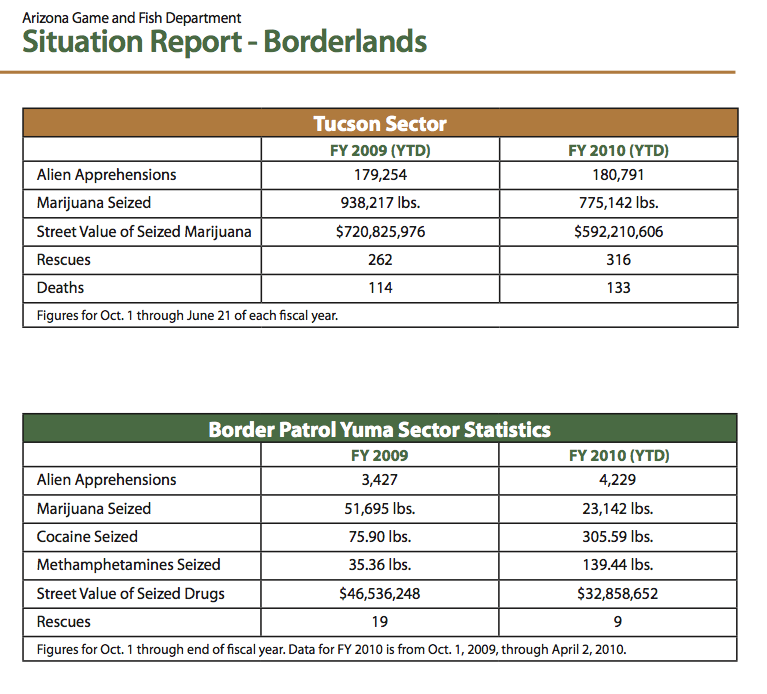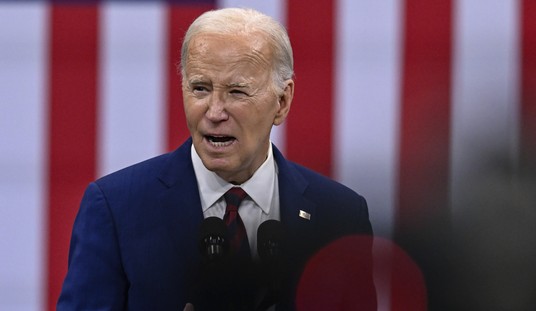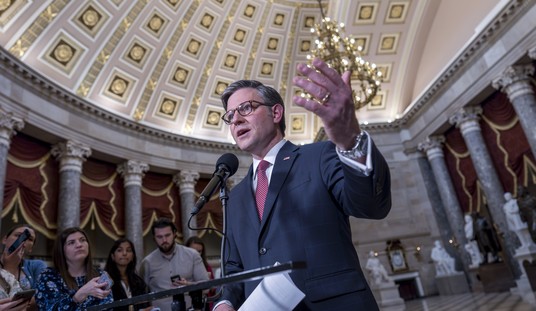Pinal County, Ariz.-This week I was privileged to participate in a ride along with the Arizona Pinal County Sheriff’s Office and got a first hand look at what deputies are dealing with on a daily basis. Although we didn’t get into any major cartel chases during my time with them, the education I received about a number of border issues was eye opening.
I started off the day by driving to Florence, Ariz. where the Pinal County Sheriff’s headquarters is located. I met with Chief James Kimble and he gave me a tour of the adult detention center. He explained to me that the Department of Homeland Security uses this particular detention center to house illegal aliens on a contract basis. According to Kimble, illegal alien inmates are in the detention center on average 28-32 days, but some stay longer based on certain criteria. The Pinal County Sheriff’s Office doesn’t conduct any activity outside of arrest and detention for illegals, the rest is handled by Immigration and Customs Enforcement (ICE), including classification and making a decision to deport.
Illegal aliens are classified three ways by ICE:
Level 1: Crime - illegal entry
Level 2: Dangerous with criminal record but not repetitive
Level 3: Dangerous with a repetitive criminal record
Let’s just say taxpayers are shelling out a good amount of money to keep these guys in the system and to determine whether they should or should not be deported.
(Side note: The United States cannot deport an illegal alien back to their country of origin unless the U.S. has a treaty with that country. If a person is in the United States illegally from a country like Somalia, a country which the U.S. doesn’t have a treaty with, ICE must either let that person stay in the U.S. or find a country that will take them.)
Recommended
After touring the detention center, I met up with Lieutenant Matthew Thomas, member of the Pinal County SWAT team. Thomas gave me a ride to my car in the parking lot so I could follow him to the city of Casa Grande, which is a hot spot for cartel activity.
I hopped in his unmarked dusty Chevy SUV and one of the first things he said was, “Sorry about the mess, this is my real office.”
To which I responded, “Quite the office! I’ll take it.”
Thomas’s “office” was similar to a typical police car - with a few upgrades. He had an AR-15 style long gun rifle in a rack on the roof just behind the driver and passenger seats and a multi-frequency radio in the front.
After following Thomas from Florence to Casa Grande, I parked at the Border Patrol station there, hopped in his "office" and we were off. We started down Interstate 8, which runs east to Interstate 10 and west all the way to California, making it the perfect freeway for drug runners to get their dope into Phoenix. I-8 is about 30 minutes south of Phoenix by way of I-10. The cities near this intersection, which used to be predominantly ranching and farming communities, are Casa Grande, Arizona City, Maricopa, Hidden Valley, Eloy and Stanfield. Although some farms still exist, this area is inundated with cartel activity. The bad guys, members of the Sinaloa cartel, live in these communities, run stash houses and have turned access roads, literally right next to farms that have been in operation for decades, into major smuggling routes. Thomas called this the “city problem.”
Nearby is the infamous Vekol Valley, the largest hotbed of drug and human smuggling in the United States and where a Pinal County Deputy was shot in April 2010. Vekol is surrounded by nasty mountain ranges on both sides. There is wide-open desert starting from mile marker 160 on I-8 and stretching all the way to Mexico. Because of the terrain, Vekol acts as a funnel. As we drove into the area, I could feel that it just wasn’t a safe place to be.
Cartels also take advantage of the Tohono O’odham Indian Reservation on the west side of Vekol Valley. They use it as an entry point, marry into Indian families so they can live on the reservation and, if a village is small enough, cartel members will simply walk in and take property by lethal force.
While we were driving near Vekol, Thomas explained the “terrain” problem to me after pulling off the side of the road to show me the “Travel Caution: Smuggling and Illegal Immigration May Be Encountered in This Area" sign provided by Homeland Security. (Remember, according to Janet Napolitano, the border is secure.) He said the cartels have a vast intelligence network. Men known as “spotters” sit up on the top of hills and mountains with cell phones and radios, calling drug running crews in the U.S. and Mexico about where Sheriff vehicles are located and where Border Patrol is cruising. Usually, as soon as Thomas shows up on patrol, the cartels are watching and know exactly where he is. For the spotters, failing to identify where U.S. authorities are located can result in a beating or even death. If a spotter calls into the boss in Mexico or down the road, says that they are clear to come through with a load, but then the authorities show up and seize the load, that spotter pays the price for the loss.
But these cartels aren’t just targeting Border Patrol. U.S. citizens travelling along I-8 who stop for a restroom break often find themselves carjacked right off the road. The area can’t be used for camping, hiking or hunting as it used to be because the area is dangerous and drug and human smugglers are carrying high-powered weapons like AK-47s.
“If you see too much you may get killed out here because they [cartel members] don’t want witnesses,” Thomas said.
Throughout the day, Thomas stressed to me the issues the Pinal County Sheriff’s Office deals with on a daily basis are so much more than just an illegal immigration problem or an illegal drug problem. They’re dealing with the Sinaloa Cartel, a large and very complex organization.
Over the past three years, Thomas has seen cartel members become increasingly defiant to U.S. law enforcement agents. Smugglers have become bolder, more brazen; they’re running more drugs and have no regard for obeying or submitting to authority. Thomas used to be able to tell a group of illegal aliens to sit down and they would obey, but now they just run. Pursuits used to be occasional, but now they happen on a daily basis. Deputies are also finding more high-powered weapons.
In Mexico, cartel members have no problem using roadside IEDs, killing women, killing children, peeling off peoples’ skin while they are still alive or beheading people while they are still alive so long as their dope arrives on time. Thomas describes them as sociopaths and narco-terrorists.
“These guys are ready for a confrontation,” Thomas said. “They have no issue directing violence toward law enforcement.”
On top of the cartel, Thomas has to deal with rip crews, groups of men who steal human and drug loads from the cartel in order to make a buck for free. For example, the Sinaloa cartel is smuggling both humans and drugs in the Vekol Valley on a daily basis, which deputies are combating. Then, deputies have to worry about rip crews coming in to the scene to steal human and drug loads, which often occur violently with shootings, rapes, robberies and extortions.
An aspect of the cartel business that is often overlooked is sexual exploitation. Sexual exploitation of both women and children is occurring at an alarming level.
Thomas said sexual predators in the U.S. will order children from Mexico through cartels; cartels then send those children along with a drug run through the desert after payment and deliver that child to their new owner for sexual use.
“They [Americans] don’t understand how much activity is going on,” Thomas said.
Cartel activity in Vekol Valley has also taken a huge toll on the environment. Smugglers are constantly creating new trails and driving all over the desert to avoid U.S. authorities. The Arizona Game and Fish Department reported 14 tons of trash were hauled out of the area last year. Wildlife habit and water tanks have been destroyed.
So what is the solution to these problems?
According to Chief Kimble and Lieutenant Thomas: Secure the border, build a double layer fence with a paved road in between and enforce the law. You can’t begin to heal if you don’t stop the bleeding.
“This is not just an Arizona issue, it’s a country issue,” Kimble said.
Logistically, Thomas says the cartels have the upper hand. They have more men, more money, bigger weapons and more time. When the public sees a single big bust on the news, that's just one of many drug loads coming across the border everday. Once the Sheriff’s Department targets a specific area, smugglers move to another area; deputies follow, smugglers move again. The fence has been built, completed and is working in the Yuma Sector of the border, but not the Tucson sector, where Pinal County is located.
“The problem has been solved in other areas,” Thomas said.
Take a look at these numbers.
Thomas and Kimble also made it clear border security is national security, and that with a porous border, bad people, including terrorsts like the ones who attacks us on 9/11, have easy access to the United States.
"We're screaming that something bad is going to happen," Thomas said.


























Join the conversation as a VIP Member